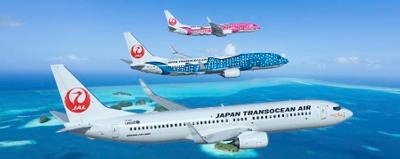Why Pack What Can be Rented?
In a move certain to raise eyebrows, and possibly hemlines, Japan Airlines (JAL) has teamed with Japanese worldwide trading concern and clothing manufacturer Sumitomo Corporation for purpose of offering the air-carrier’s passengers a clothing rental service.

The scheme’s architects posit passengers will travel with fewer bags if afforded the opportunity to rent fashionable, comfortable clothing at their destinations. Fewer bags equals diminished aircraft weight, which in turn equals diminished fuel expenditure and correspondingly lower CO2 emissions.
Clothing accounts for the majority of the contents of the majority of the baggage loaded aboard commercial airliners. The average pair of denim jeans weighs 14 ounces. Pairs of men’s and women’s shoes weigh an average of 3.3 and 2.3-pounds respectively. Ergo, the 386 passengers traveling aboard a sold-out 777-300ER—provided a fifty-fifty split of men and woman, each checking two pairs of jeans, two pairs of shoes, and wearing one pair of each—haul with them 7,497-pounds of just denim jeans and shoes.
To the point of total baggage weight, a 2009 EASA study determined the entirety of a man’s checked baggage weighs, on average, 37-pounds. A woman’s checked bags average one pound more. Men are apt to fly with more carry-on bags, however; as the study found men’s and women’s carry-on bags weigh, on average, 15 and 13-pounds respectively.
Collectively, the 193 male passengers traveling aboard the aforementioned, sold-out 777-300ER bring with them a total of 10,036-pounds of checked and carry-on baggage, while their female counterparts account for 9,843-pounds of such. All told, the average 777-300ER is packed full of 19,879-pounds of combined men’s and women’s checked and carry-on baggage—the weight of an additional 110 revenue passengers.
To cut down on the nearly ten-tons of frocks, socks, jocks, etc., Japan Airlines passengers will henceforth be able to use the Any Wear-Anywhere website to pre-book destination clothing. By providing their individual flight-information, clothing size, length of stay, and season of travel at least one-month in advance, passengers will have appropriate clothing sent directly to their destination accommodations.
Travelers will be able to rent up to eight outfits for as long as two-weeks at rates of between $28 and $48—depending on the number and type of articles of clothing requested.

In addition to providing the online reservation system, Sumitomo—in partnership with dry-cleaning company Hakuyosha and clothing provider Wefabrik—oversees the procurement, laundry, and delivery of rental clothing.
For the duration of a trial period slated to last until 24 August, the clothing rental service will be limited to Japanese Airlines passengers bound for Japan. Should the program prove a success, Sumitomo may extend the service throughout the Oneworld network—which includes American Airlines, British Airways, Cathay Pacific, and Malaysia Airlines.
Considered casually, the removal of a few items of clothing from the cargo-hold and overhead bins of a wide-body airliner seems a triviality. In point of fact, every kilogram (2.2-pounds) of weight subtracted from an aircraft operating between Tokyo (HND) and New York (JFK) reduces the aircraft's carbon emissions by 0.75-kilograms (1.6-pounds).
 Aero-News: Quote of the Day (05.25.25)
Aero-News: Quote of the Day (05.25.25) Classic Aero-TV: Efficient Versatility -- NASA GL-10 Greased Lightning
Classic Aero-TV: Efficient Versatility -- NASA GL-10 Greased Lightning NTSB Prelim: Cessna 525
NTSB Prelim: Cessna 525 Klyde Morris (05.23.25)
Klyde Morris (05.23.25) Airborne-NextGen 05.20.25: Drone Regs, Zero-Emission Cargo, Door-Dash Drone
Airborne-NextGen 05.20.25: Drone Regs, Zero-Emission Cargo, Door-Dash Drone




